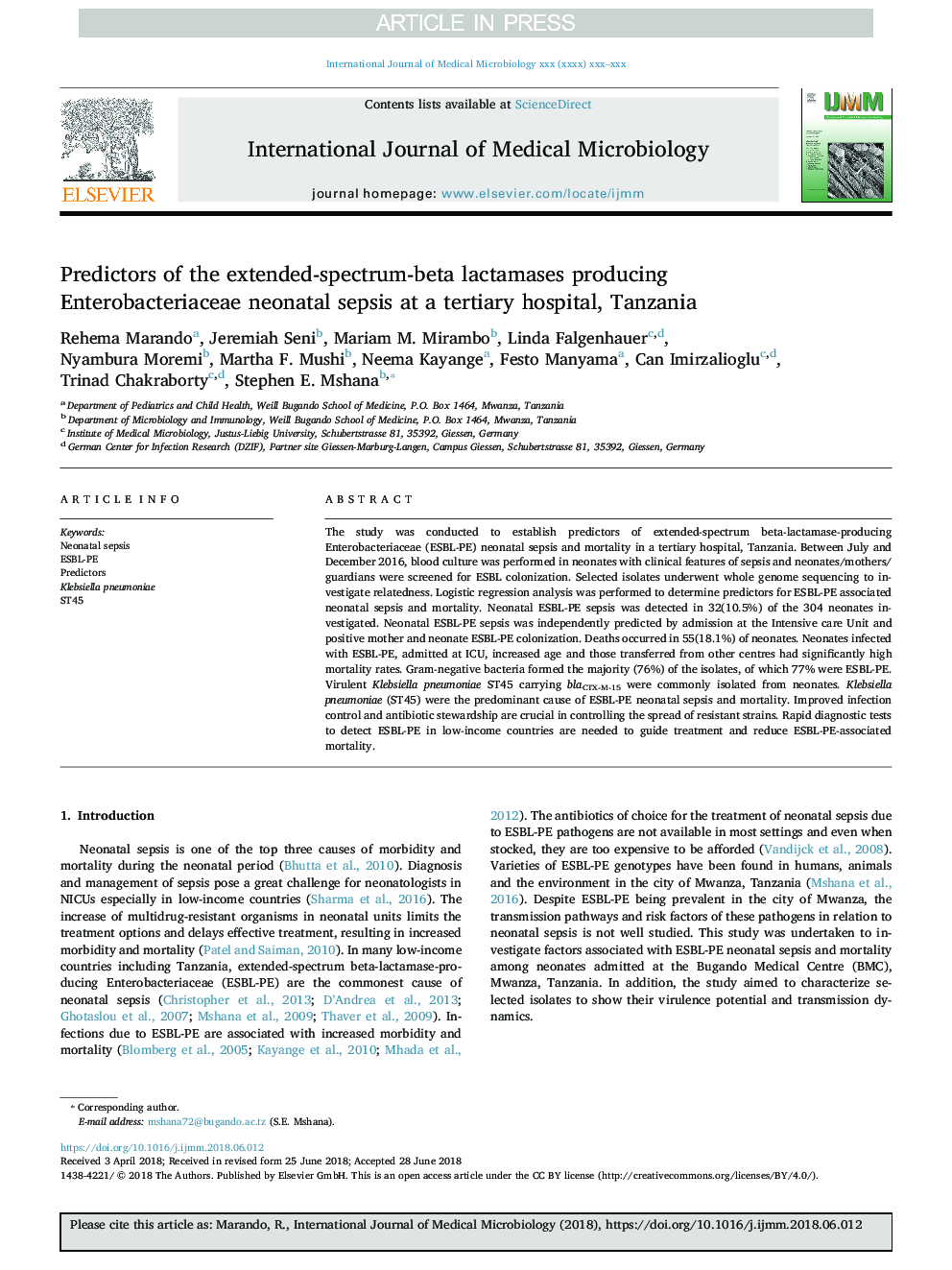| Article ID | Journal | Published Year | Pages | File Type |
|---|---|---|---|---|
| 10157219 | International Journal of Medical Microbiology | 2018 | 9 Pages |
Abstract
The study was conducted to establish predictors of extended-spectrum beta-lactamase-producing Enterobacteriaceae (ESBL-PE) neonatal sepsis and mortality in a tertiary hospital, Tanzania. Between July and December 2016, blood culture was performed in neonates with clinical features of sepsis and neonates/mothers/guardians were screened for ESBL colonization. Selected isolates underwent whole genome sequencing to investigate relatedness. Logistic regression analysis was performed to determine predictors for ESBL-PE associated neonatal sepsis and mortality. Neonatal ESBL-PE sepsis was detected in 32(10.5%) of the 304 neonates investigated. Neonatal ESBL-PE sepsis was independently predicted by admission at the Intensive care Unit and positive mother and neonate ESBL-PE colonization. Deaths occurred in 55(18.1%) of neonates. Neonates infected with ESBL-PE, admitted at ICU, increased age and those transferred from other centres had significantly high mortality rates. Gram-negative bacteria formed the majority (76%) of the isolates, of which 77% were ESBL-PE. Virulent Klebsiella pneumoniae ST45 carrying blaCTX-M-15 were commonly isolated from neonates. Klebsiella pneumoniae (ST45) were the predominant cause of ESBL-PE neonatal sepsis and mortality. Improved infection control and antibiotic stewardship are crucial in controlling the spread of resistant strains. Rapid diagnostic tests to detect ESBL-PE in low-income countries are needed to guide treatment and reduce ESBL-PE-associated mortality.
Related Topics
Life Sciences
Biochemistry, Genetics and Molecular Biology
Biochemistry, Genetics and Molecular Biology (General)
Authors
Rehema Marando, Jeremiah Seni, Mariam M. Mirambo, Linda Falgenhauer, Nyambura Moremi, Martha F. Mushi, Neema Kayange, Festo Manyama, Can Imirzalioglu, Trinad Chakraborty, Stephen E. Mshana,
